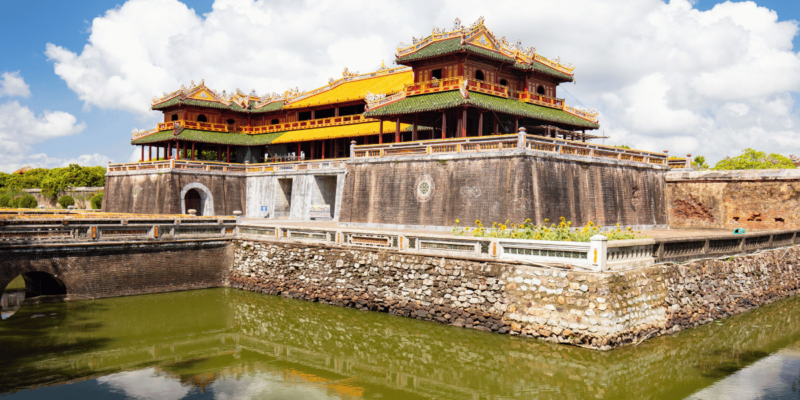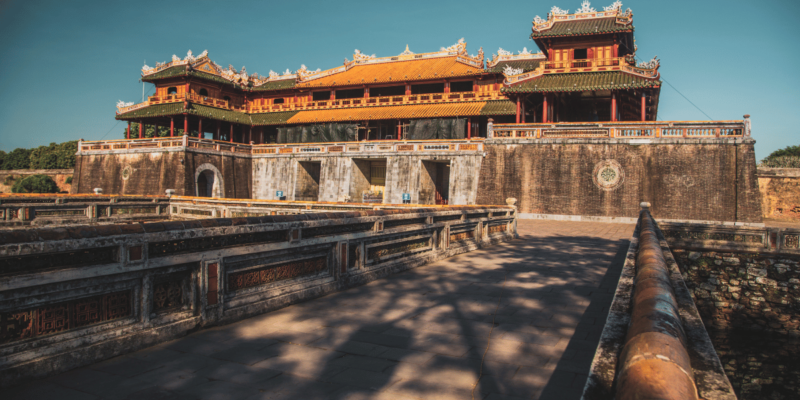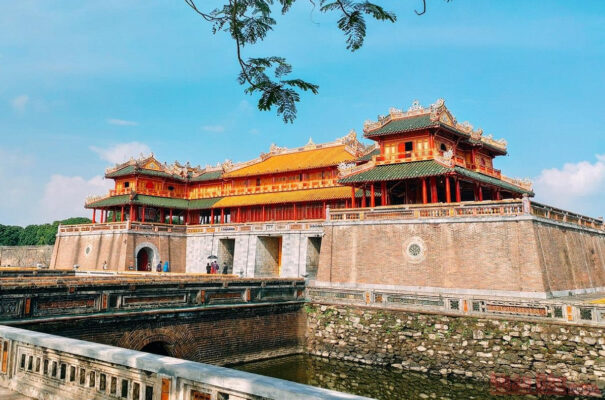The Royal Tombs of Hue: A Deep Dive into Vietnam’s Imperial Past
Nestled in the heart of central Vietnam, the ancient city of Hue is a treasure trove of historical and cultural significance. Known for its serene beauty and rich heritage, Hue was the capital of Vietnam during the Nguyen Dynasty. One of the most fascinating aspects of Hue is its royal tombs, which are the final resting places of the Nguyen emperors. These tombs are not just burial sites; they are magnificent architectural wonders that reflect the grandeur and culture of imperial Vietnam.
This article aims to provide an in-depth exploration of the Royal Tombs of Hue, helping readers understand the historical and cultural significance of these imperial mausoleums. By delving into the past, we hope to encourage travellers to appreciate and explore Vietnam’s rich heritage through these monumental sites.
The History of the Nguyen Dynasty and Hue City
Formation and Development of the Nguyen Dynasty
The Nguyen Dynasty, which ruled Vietnam from 1802 to 1945, was the last ruling dynasty of the country. The dynasty was established by Emperor Gia Long, who unified Vietnam after years of civil war. The Nguyen emperors established their capital in Hue, turning it into the political, cultural, and religious centre of Vietnam.
Role of Hue in Vietnamese History
Hue’s significance goes beyond its role as the imperial capital. It was a hub of education, culture, and spirituality. The city is home to numerous historical sites, including the Imperial City, pagodas, and, of course, the royal tombs. These tombs are scattered along the banks of the Perfume River, each offering a glimpse into the life and times of the Nguyen emperors.
Famous Royal Tombs
Tomb of Gia Long
The Tomb of Gia Long, the founder of the Nguyen Dynasty, is situated in a remote, peaceful area surrounded by mountains and rivers. The tomb complex includes several structures, such as pavilions and temples, harmoniously integrated into the natural landscape.
Tomb of Minh Mang
Known for its majestic architecture and beautiful landscaping, the Tomb of Minh Mang reflects the emperor’s strict Confucian beliefs. The tomb is famous for its symmetrical layout and extensive use of natural elements, such as lakes and gardens.
Tomb of Thieu Tri
The Tomb of Thieu Tri is less grandiose compared to other tombs but is unique for its simplicity and elegance. Located in a tranquil rural area, the tomb reflects the emperor’s desire for peace and simplicity.
Tomb of Tu Duc
The Tomb of Tu Duc is one of the most beautiful and well-preserved royal tombs in Hue. Built during the emperor’s lifetime, it served as a retreat for him. The tomb complex includes pavilions, temples, and a lake, making it a serene and picturesque site.
Tomb of Khai Dinh
The Tomb of Khai Dinh stands out for its blend of traditional Vietnamese architecture and Western influences. This tomb is characterised by its ornate decorations, intricate mosaics, and the impressive statue of the emperor.
Tomb of Duc Duc
The Tomb of Duc Duc, although smaller and less visited, is significant due to its historical context. Emperor Duc Duc’s reign was short-lived, and his tomb reflects the tumultuous period of his rule.
Architecture and Art at the Tombs
Distinctive Architectural Styles
The architecture of the royal tombs in Hue is a unique blend of traditional Vietnamese design and influences from other cultures, particularly China and France. These tombs were designed with careful consideration of feng shui principles, ensuring harmony with the natural surroundings.
Decorative Arts
The royal tombs are adorned with intricate decorations, including detailed carvings, murals, and mosaics. These artworks not only enhance the beauty of the tombs but also convey symbolic meanings and reflect the artistic achievements of the Nguyen Dynasty.
Cultural and Historical Significance of the Tombs
Cultural Heritage of Vietnam
The royal tombs of Hue are invaluable cultural assets that showcase the grandeur and sophistication of Vietnam’s imperial past. They symbolise the power and legacy of the Nguyen emperors and are a testament to the country’s rich cultural heritage.
Historical Importance
These tombs provide insights into the lives of the Nguyen emperors and the socio-political landscape of their time. They are crucial for understanding the history of Vietnam and the development of its architectural and artistic traditions.
Tips for Visiting the Royal Tombs
Planning Your Visit
The best time to visit the royal tombs of Hue is during the dry season, from March to August, when the weather is pleasant. To make the most of your visit, consider hiring a local guide who can provide detailed historical and cultural insights.
Visitor Guidelines
When visiting the royal tombs, it is essential to respect the local customs and regulations. Wear appropriate clothing, as these are sacred sites. Avoid making loud noises and follow the rules set by the site authorities.
Nearby Attractions and Activities
While in Hue, take the time to explore other historical and cultural sites, such as the Imperial City, Thien Mu Pagoda, and Dong Ba Market. Participate in local festivals and cultural activities to enhance your travel experience.
Conclusion
The royal tombs of Hue are more than just burial sites; they are monumental symbols of Vietnam’s rich history and cultural heritage. These architectural marvels offer a deep insight into the imperial past and the grandeur of the Nguyen Dynasty.
We encourage travellers to visit the royal tombs of Hue to appreciate and honour Vietnam’s cultural and historical legacy. By exploring these magnificent sites, you contribute to the preservation and promotion of the country’s invaluable heritage. Remember to respect the sites and engage with local culture to make your visit meaningful and enriching.




